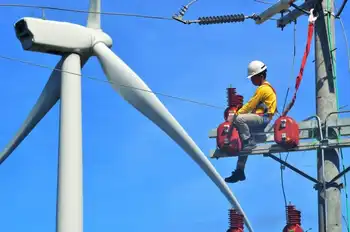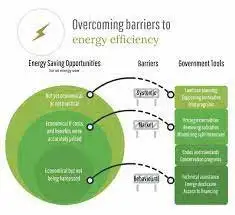Atlantic region ponders uranium comeback
By Toronto Star
Protective Relay Training - Basic
Our customized live online or in‑person group training can be delivered to your staff at your location.

- Live Online
- 12 hours Instructor-led
- Group Training Available
In the past seven years, uranium spot prices have jumped ten-fold, recently levelling off at about $75 per pound.
"The price of uranium has driven demand, and therefore companies are now exploring in areas that might not have been looked at before," says Downey, senior geologist at Dartmouth-based Tripple Uranium Resources Inc., a subsidiary of Vancouver-based Capella Resources Ltd.
"In Labrador, some of the geological environments are very similar to Saskatchewan, and they're the prime targets right now."
As a result, East Coast geologists like Downey are coming home to work claims that would have been passed over not so long ago.
There are now over a dozen junior firms holding licences across the region, with the largest companies focused on the central mineral belt of Labrador.
Downey says prospects in New Brunswick and Labrador are particularly promising.
The soaring demand for uranium, which is primarily used to create fuel for nuclear power plants, is being driven by a growing list of countries seeking "greener" energy sources that will help them reduce greenhouse gas emissions.
The World Nuclear Association estimates 30 reactors are now under construction around the world, and 64 more are planned, including a second reactor in New Brunswick at Point Lepreau.
Mark O'Dea, the 40-year-old chief executive of Vancouver-based Aurora Energy, is behind a plan to build the first Canadian uranium mine outside Saskatchewan.
O'Dea, who grew up in Newfoundland, currently divides his time between Labrador and British Columbia. He says his company will seek environmental approval for an underground and open-pit operation at Michelin and Jacques Lake in Labrador. Combined, the two ore bodies southwest of Postville could yield up to 100 million pounds of uranium.
"When you assess what's present in Canada, outside of the Athabaska basin (in Saskatchewan), this is one of the only big, viable uranium projects," O'Dea said in an interview.
"We've got the heart of this new uranium district... and we own it."
But the world's renewed interest in uranium is raising alarm among an increasingly vocal group of environmentalists and ordinary citizens who have spotted prospectors making their rounds in and around their communities.
The industry's detractors warn that uranium mining produces dangerous waste that is difficult to contain.
"Uranium mine tailings are among the most difficult to manage wastes on the planet," said Mark Winfield, an assistant professor of environmental studies at York University in Toronto.
"They contain toxic substances, particularly heavy metals. About 85 per cent of the radionucleides from the ore end up in the tailings, so it's radioactive. They're typically acidic and semi liquid and hard to contain."
Winfield, who has conducted research for the Pembina Institute in Alberta, argues the proposed ventures in the Maritimes are of particular concern because they represent marginal business propositions.
"In the Maritimes, because you'd be dealing with relatively low-grade ore, you'd tend to produce more tailings per tonne of ore."
O'Dea says his Labrador mine would produce about 2.2 pounds of uranium per tonne of ore – that's on par with worldwide averages. But Jerry Grandey, chief executive of Cameco Ltd., says that grade is low when compared with what is mined in Saskatchewan.
"Will it (Labrador's mines) be economic?... It's yet to be determined," says Grandey, whose company describes itself as the largest uranium producer in Canada.
"They've got quite a bit of work to do."
Grandey says the emergence of an Atlantic uranium industry will likely start with a major public debate.
"Every political jurisdiction starts out with a mythology, generally with an anti bias," he says. "But when they get into the facts... then they say of all human activity and endeavours, this is one of the least risky."
In New Brunswick, the debate has already started.
Citizens groups are writing letters to newspaper editors, taking aim at exploration carried out last summer by Vale Inco Ltd. near Moncton.
In Nova Scotia, where the provincial government imposed a moratorium on uranium mining in 1982, the debate has been revived by reports that claim staking for uranium has started up again despite the law.
The province's Opposition New Democrats have accused the Tory minority government of using "subterfuge" to allow staking in areas near previous uranium finds.
Robert Krienke, president of Tripple Uranium Resources, insists the company's work in Nova Scotia is aimed at finding other minerals.
Still, he admits that recent public meetings in New Brunswick have made it clear there is growing opposition to anything that hints at a revival of uranium prospecting.
"It's been geared towards a mob that wants to lynch you because you're in exploration," he says.
The mining industry has taken note, with some stock analysts warning there is a history of community opposition blocking even the brightest of prospects.
Raymond Goldie, an analyst with Toronto-based Salman Partners, says even though there have been impressive finds in Labrador, "the biggest immediate issue they face is the social problem.
"Not everyone who lives in that area is pro uranium mining."











